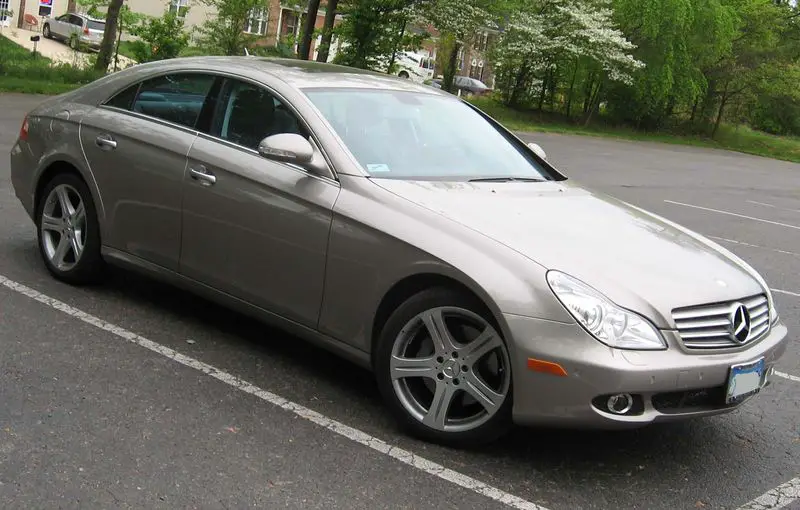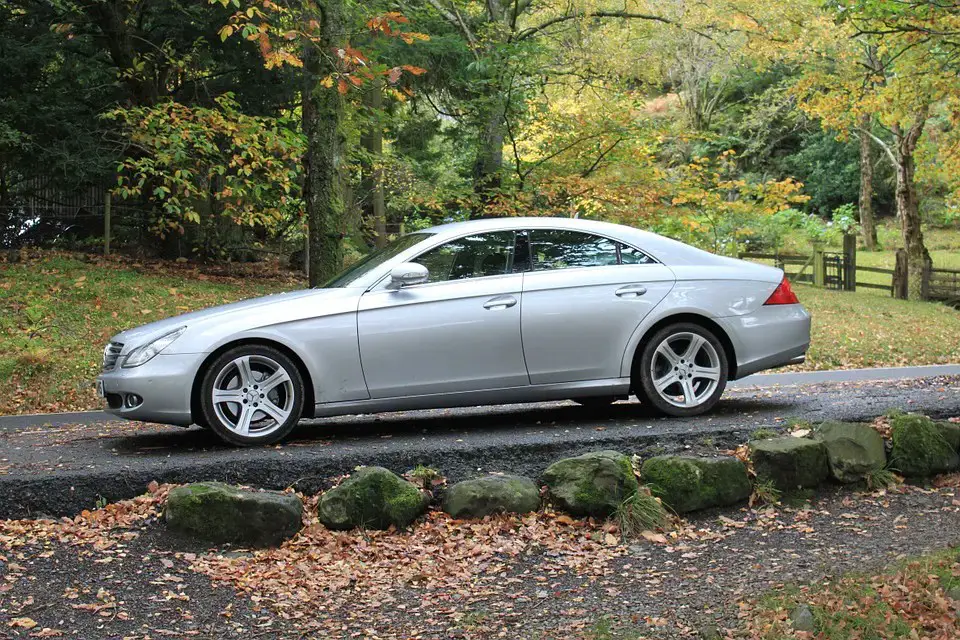Review: Mercedes CLS W219 ( 2004 – 2010 )

Mercedes CLS W219, the car that started the whole coupe sedan hysteria. Those sedans you buy strictly for status and looks. Mercedes CLS W219, the car of the “flour” distributors, and other cool stuff.
In 2004 Mercedes was in an identity crisis and didn’t know what to put on the market. So they came up with the idea of a saloon in the shape of a coupe and rolled out of the factory gates the Mercedes CLS W219. And because any new idea has to be exploited to the full, the Mercedes CLS W219 came built on the platform of the E Class W211 and was positioned in price between the E Class and the S Class.
How does the Mercedes CLS W219 differ from the E Class W211?
- First of all the appearance. The W211 has always been far too conservative. If the W211 was Hannah Montana, the Mercedes CLS W219 was Miley Cyrus from the “Wrecking Ball” era. Like Wrecking Ball, the Mercedes CLS W219 was an instant and controversial success.
- However, this appearance comes with a few drawbacks: Rear visbility is pretty much non-existent so reverse parking depends almost entirely on sensors. Fortunately, the Mercedes CLS W219 came standard with this option. Also, rear space is very limited due to the curved roofline so if you have a few big guys who need to go visit an poor soul that can’t pay his protection tax, make sure they don’t spend too much time in the back.
- Unlike the classic version, which is more sensible than british tea, the Mercedes CLS W219 has only two seats in the back, with space in the middle for flour and other things. Like ammunition.
- The engines on the Mercedes CLSW219 are heavy-duty only. The smallest and cheapest is a 3-litre diesel, thus providing some exclusivity and superiority over the poor 2.2 cdi or 2.7 cdi.

Mercedes CLS W219 Engines
Petrol
- 3.0 V6 of 228 horsepower – The classic M272 opens the list of options for the Mercedes CLS W219, coming in the form of the CLS280 and CLS300. The infamous rocker shaft issue should be solved for this engine, but there’s still a chance you’ll get a kick in the financial nads.
- 3.5 V6 of 268 and 288 horsepower – This M272 was produced from 2004 to 2010, right in the golden age of Mercedes’s reliability. The serious concern is with the rocker shaft which is failing and needs to be replaced. If the issue is not adressed in time, the engine needs to be replaced. In both scenarios, we are talking about several thousand euros, so it’s good to check the history of such an engine. The issue was solved in 2007 – 2008, with some isolated issues reported through 2009, so 2008 should be a good starting point.
- 5.5 V8 of 302 and 382 horsepower – Here are two completely different engines. The 382-horse version, produced between 2008 and 2010, is codenamed M273 and – you guessed it – is related to the M272. Watch out for 2008 models that may have rocker shaft issues. The 302 horsepower version is the M113 and is one of the most reliable V8 engines in history, launched in 1998. Both engines are codenamed CLS500.
Diesel
3.0 V6 of 221 and 272 horsepower – The same OM642 used in various forms of tuning, the CLS320 and CLS350 come with decent reliability alongside this engine that has powered all the big cars in the Mercedes range. Occasional turbine and injector issues, but nothing spectacular except for the oil cooler gasket which is a pain in the bottom to replace.

Mercedes CLSW219 General Issues
- I could copy and paste from the article about the W211 E Class, but I’ll write something here too.
- The front suspension is a point of interest for all versions and engines, being as squishy as King Charles’ joints. Springs, arms, linkages, bushings, and the whole gang.
- The water pump is a weak point for all engines. Like a Emmentaler cheese, it starts to get holes everywhere and needs replacing. Except that with Emmentaler cheese, the more holes you have, the less cheese you have. The more cheese you have instead the more holes you have. So the more cheese you have, the less cheese you have.
- The Mercedes CLS W219 came with AirMatic adaptive suspension, and the ABC pump responsible for this system fails every 50-60,000km. Or 1000km, if you drive it in the Balkans.
- Rust, rust, rust. There is no Mercedes without rust, just as there is no successful stand-up show held somewhere in a public space, with general public attendance. As for the Mercedes CLS W219, the rust starts from the wings, sills, and mirrors.

Mercedes Cls Vehicle Mercedes Transportation Car
Mercedes CLS W219 Verdict
A fabulous car, for those with a lot of money. However, no matter how you look at it, it’s a very expensive car to maintain. A car with slight mobster vibes that appeals to those who need to get there fast, in style. A car that was seen as an oddity in 2004 and is seen as guilty for the sedan-coupe styling will be seen as a classic Mercedes. Mercedes CLS W219 – the official car of the style over function.
And yet, why spend so much extra money on a Mercedes CLS W219, when you can buy an E-Class which is much cheaper? If you get it for the same money, you get it much better equipped. And you get access to the fantastic 2.2 cdi. And it’s much more practical. Its only minus is that it looks a bit dull. But an E Class owner will never understand a CLS, whereas a CLS owner will never understand an E Class. A CLS owner will never understand why you’d spend over 50,000 euros to look anonymous in traffic.
Which engine do I recommend? If you’re going to blow up your bank account, at least do it in style. CLS500 with the 302 horsepower engine (M113) for petrol, and if you want something more tame and economical, then the CLS320cdi will do. But can you really place the words “CLS” and “economical” in the same sentence?
Similar Articles

Review : Skoda CitiGO ( 2011 - 2020 )

Review : Seat Mii ( 2011 - 2020 )

Review : VW Up! ( 2011 - 2023 )
Write an answer
- Review : Skoda CitiGO ( 2011 - 2020 ) 02 August 2025
- Review : Seat Mii ( 2011 - 2020 ) 02 August 2025
- Review : VW Up! ( 2011 - 2023 ) 16 July 2025
- November 2025
- October 2025
- August 2025
- July 2025
- April 2025
- March 2025
- February 2025
- January 2025
- December 2024
- November 2024
- October 2024
- August 2024
- July 2024
- June 2024
- May 2024
- April 2024
- March 2024
- February 2024
- January 2024
- December 2023
- November 2023
- October 2023
- September 2023
- August 2023
- July 2023
- June 2023
- May 2023
- April 2023
- March 2023
- February 2023
- January 2023
- December 2022
- November 2022
- October 2022
- September 2022
- August 2022
- July 2022
- June 2022
- May 2022
- March 2022
- April 2021
- January 2021
- December 2020
- November 2020
- October 2020
- September 2020
- August 2020
- July 2020
- March 2020